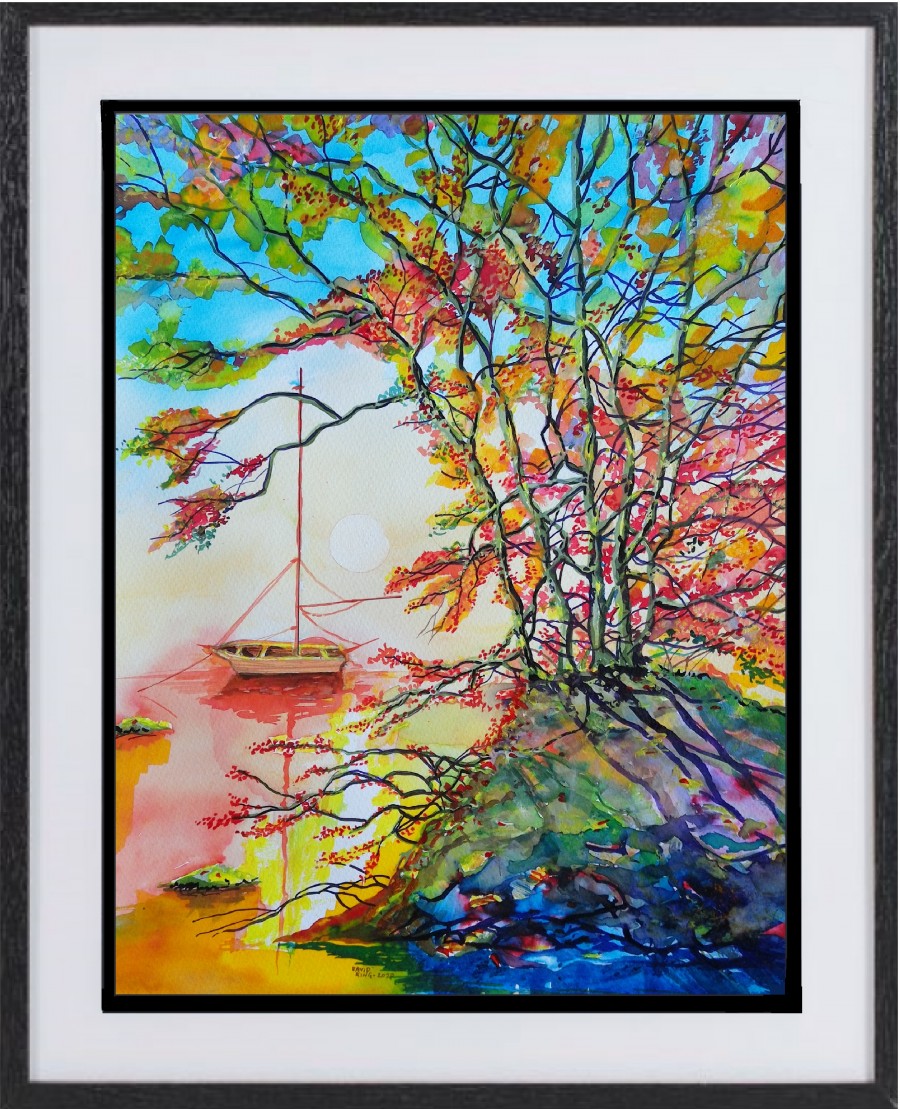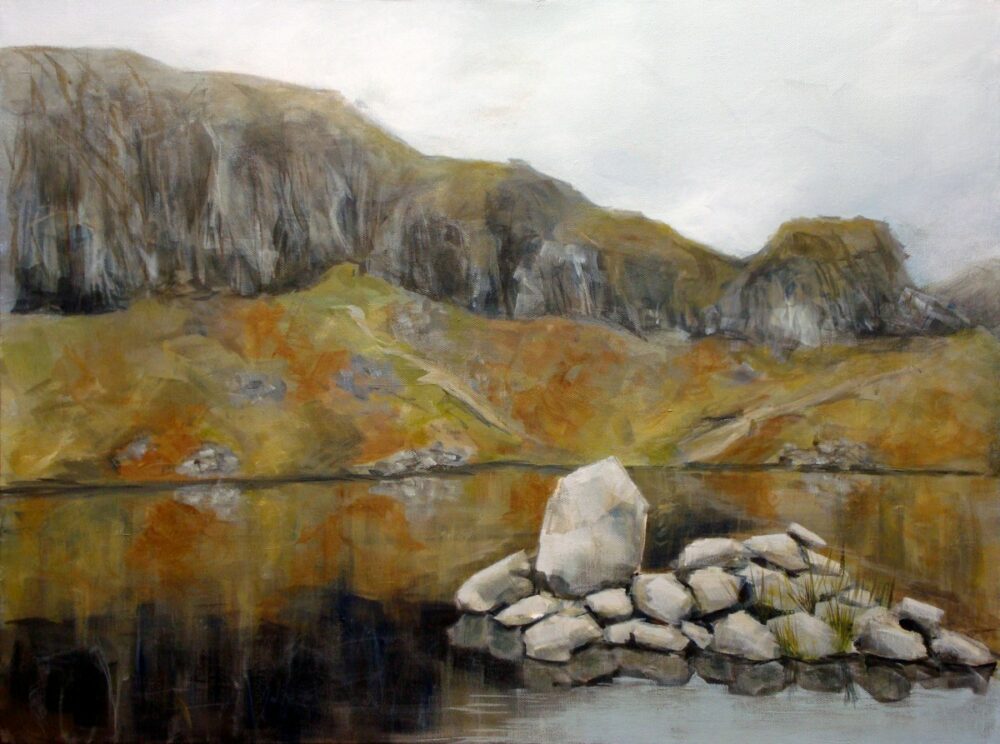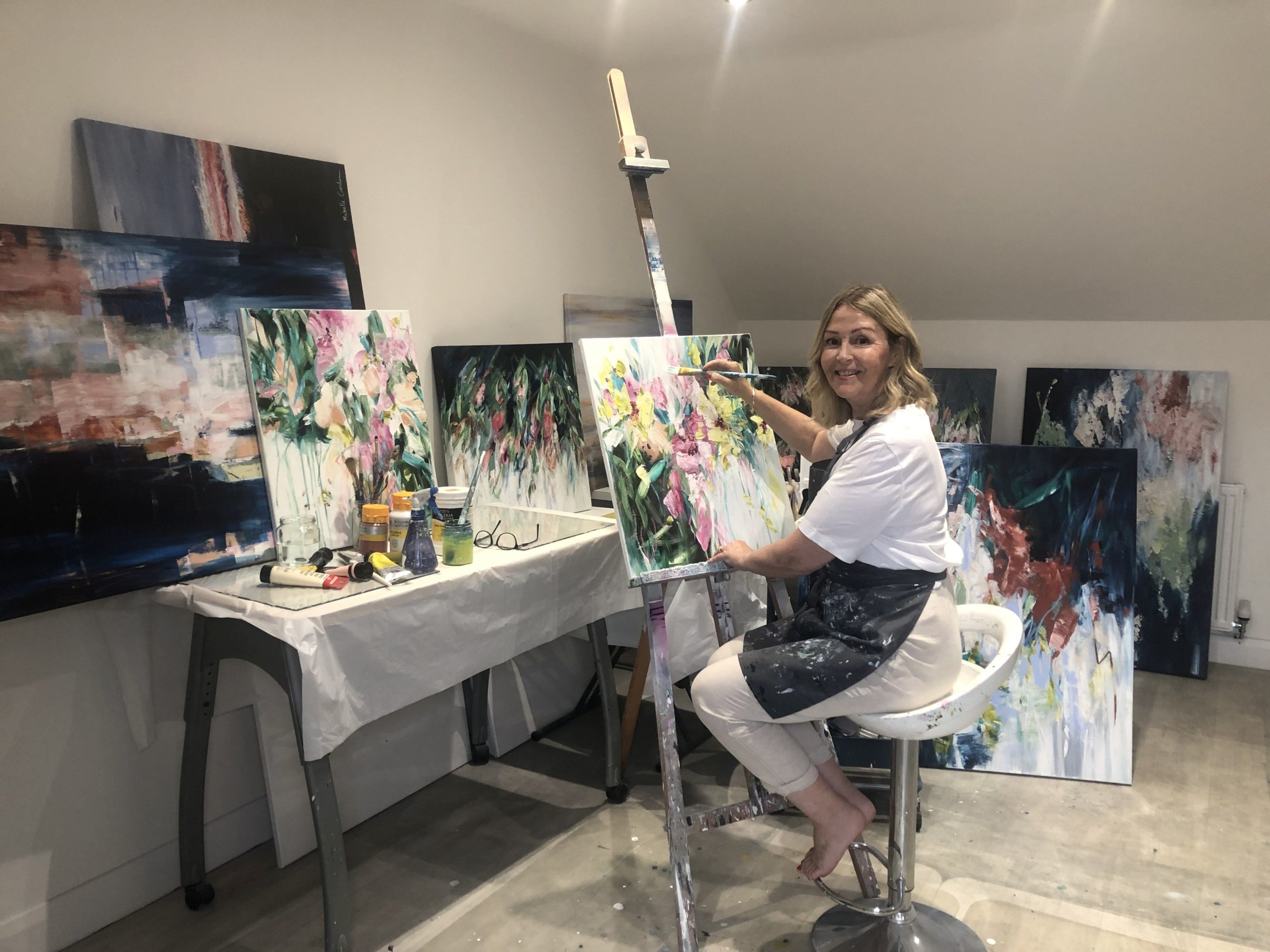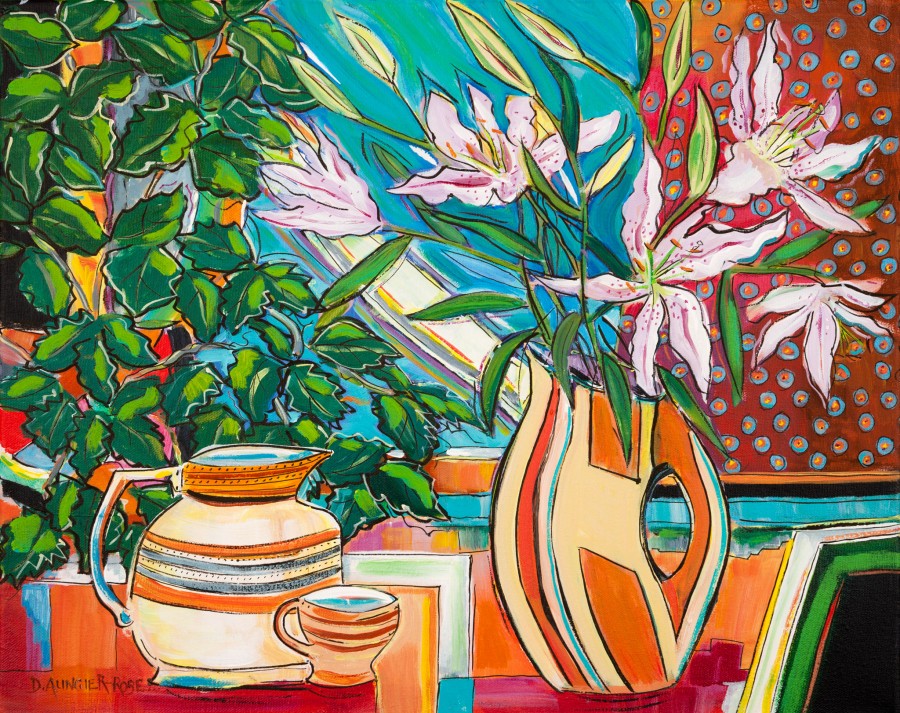In the artist’s words, “Dawn Voyage” is a “beautifully detailed impressionistic original painting which is mounted, glazed, framed and ready to hang on the wall”. David Kings’ art is gaining more and more popularity with our collectors and there is no surprise as his colourful and skilful paintings are both beautiful and dramatic. Using mainly watercolour and ink, David creates images that capture the beauty of nature in an abstract way telling the story of going places and returning home. We asked David a few questions about his inspiration and creative process:

What are your inspirations?
I have always felt a fascination with the drama of the changing play of light on the landscape and this is something I seek to capture in my work. I hope my work tells a story, and you will notice that many of my paintings hint at the anticipation of a voyage about to take place, or the joy of returning home. I would say that I try to achieve a controlled abstraction in my work where the wilder vibrancy of the colour contrasts with the very precise brushstrokes for the fine detail. Of course, my overriding aim is to achieve a painting of drama and beauty.
What is your creative process?
My creative process starts with a lot of thought about how I can combine some seemingly disparate elements – the abstraction of colour combined with painstakingly fine detail – I have been known to trim down 000 brushes to get an even finer line, whilst ensuring the overall painting is compositionally sound. The best way I can describe my creative process is by using a musical analogy using my favourite band – with four egotistical musicians fighting for attention, The Who should have sounded an absolute cacophony, but somehow, the elements come together to create something magical. I try to combine the different aspects of my work in a similar way.
How long does each painting take?
Although the mental planning can take ages, I usually aim to finish my paintings within a day or two. Wet on wet techniques don’t lend themselves to timidity or working slowly, but the introduction of the finer detail can take hours of concentrated effort. The trick is knowing when to stop!
View David’s gallery here.



